AS THE 1986 Brisbane club season drew to a close, Australian skipper Wally Lewis warned of a mass defection of players across the border, following the Queensland Rugby League’s decision not to field a side in the 1987 Sydney premiership.
Lewis himself was being courted by Manly-Warringah and Eastern Suburbs, but ultimately signed a three-year deal to remain in Queensland and continue playing with Wynnum-Manly.
Within 12 months he would be signed as the inaugural skipper of the Brisbane Broncos.
Lewis, as captain-coach, led Wynnum to a 14-6 win over a courageous Brothers outfit in the 1986 BRL grand final before a crowd of 25,000 — down 6000 on the 1985 decider.
Brothers, coached by Lewis’ former mentor at Valleys Ross Strudwick, were given no chance, but led 6-4 at half-time, with their forwards playing like men possessed.
Celebrations back at Wynnum Leagues Club were subdued, given the Seagulls’ parlous financial state.
Lewis said he “played for free” that year and felt relief, rather than joy, when Wynnum claimed the title, given he had controversially replaced the popular Des Morris as coach.
Two weeks later, Lewis left with the Kangaroos for a 21-match tour of Papua New Guinea, England and France, with the Don Furner-coached national side returning undefeated, repeating the effort of the history-making 1982 Kangaroos, of which Lewis also had been a part.
On the eve of the 1987 BRL season, The Courier-Mail’s Paul Malone labelled it “the last Brisbane premiership that matters”, given there would be a Brisbane team in Sydney in 1988.
But under whose banner would the new entity contest Australia’s elite rugby league competition, which was to expand from 13 clubs to 15, or possibly 16?
In mid-February 1987, news broke that four former Brisbane first-grade players — Barry Maranta, Paul “Porky” Morgan, Gary Balkin and Steve Williams — had put up their hands to launch the new team.
At first, only Maranta and Morgan’s names were revealed, although Balkin’s involvement soon became public as well.
Balkin, the “hospitality king” of southeast Queensland at the time, had an amazing network of contacts, both inside and outside the game.
Morgan was a financial backer of the box-office hit Crocodile Dundee.
But it was former state league five eighth Williams who had set the ball rolling when he telephoned his father-in-law Maranta after reading a newspaper advertisement placed by the QRL, on behalf of the NSW Rugby League, seeking expressions of interest from anyone keen to back a team in the Sydney competition.
“Steve was the one who fired us up,” recalled Maranta, a former Easts Tigers player and schoolteacher, who had forged a successful business career in Australia and the US.
Williams, who had worked for the QRL and owned his own media and marketing company, said a team from Brisbane was something he and Maranta had talked about in private, and now that the door was open, it was time to “have a go”.
“The Brisbane competition was starting to fade,” Williams said.
“There was nothing to lose.”
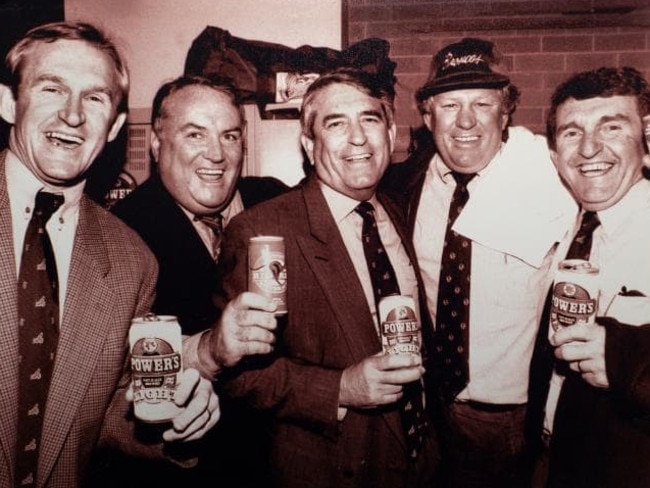
The other main contender was the Norwood/McKay Consortium, which had former QRL chairman Ron McAuliffe on board, giving it immediate credibility.
This consortium had the financial backing of Perth clothing entrepreneur Alister Norwood and sports marketing guru Jim McKay, who had a background in Australian rules.
They even had Australian skipper Lewis and fellow international Gene Miles “on-side” in the initial stages of their bid, thanks to the influence of McAuliffe.
An advantage for the Maranta Consortium was its intimate knowledge of what made local league officials tick, and there certainly was no complacency, which may have been a problem for the Norwood group.
In an interview with Rugby League Week’s Tony Durkin, McAuliffe made the stunning admission that he didn’t watch much football.
“I’m not what you call, a devotee,” he said.
“I like the game. I like its competitiveness. Rugby league brings a lot of pleasure to a lot of people. But I’m not an avid fan of 13 against 13, out in the middle.
“For me, the appeal of the game has been as a business. In my years of administration, I’ve regarded rugby league as a very marketable product to be sold professionally.”
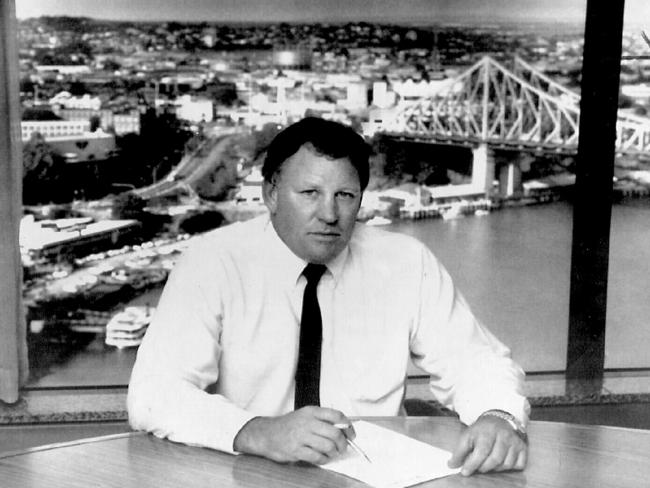
NSWRL chairman Ken Arthurson believed McAuliffe would be an invaluable member of the board of whichever club got the green light.
The new QRL chairman was Bill Hunter, 63, a fighter pilot in World War II.
McAuliffe, a “Rat of Tobruk”, remained as chairman of the Lang Park Trust.
A Redcliffe alderman, Hunter conceded it would be impossible for him to emulate the “ability, style and flair” of McAuliffe.
“We will be looking at more of a committee style, with myself, the directors and (managing director) Ross Livermore,” he said.
Publicly, Hunter had been a supporter of Brisbane team going into Sydney, from very early in his time as chairman.
But it was his failure to use his casting vote, which had killed off any chance of the Darryl Van de Velde-led consortium getting the green light for the 1987 season.
When nine members of his executive voted on the issue (in 1986), it had the support of four.
Hunter could have cast his vote and then, as the constitution allowed, cast a second, deciding vote. But he abstained.
Van de Velde, a former state forward and coach of Redcliffe, decided it was all too hard trying to get through to the local officials, who were intent on defending their own patch.
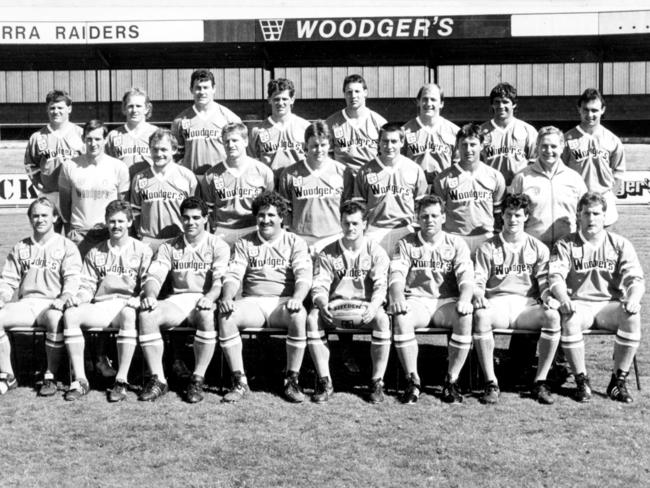
Some were worried about losing their car parking spaces at Lang Park, or access to the “free” bar, rather than the big picture.
But Van de Velde never lost faith in the concept, even to the extent of providing “Porky” Morgan with the income and expenditure budget he had put together for his initial bid.
“I’ve never told anyone, but ‘Porky’ was so appreciative, he offered me Life Membership of the Broncos, something I never took up,” said Van de Velde, who later became chief executive of Brisbane rivals, the now defunct South Queensland Crushers.
Around the same time as the Maranta Consortium had come to light, the QRL had announced the reappointment of Wayne Bennett as Queensland’s State of Origin coach, despite his move to Canberra to work alongside Australian coach Furner at the Raiders.
The desirability of having a Brisbane side in the NSWRL competition was starkly illustrated by the fact the Raiders boasted 11 Queenslanders — Mal Meninga, Gary Belcher, Peter Jackson, Steve Jackson (no relation), Gary Coyne, Sam Backo, Jay Hoffman, Rowan Brennan, Les Morrisey, and brothers Steve and Kevin Walters.
The exodus of talent across the border had to stop.
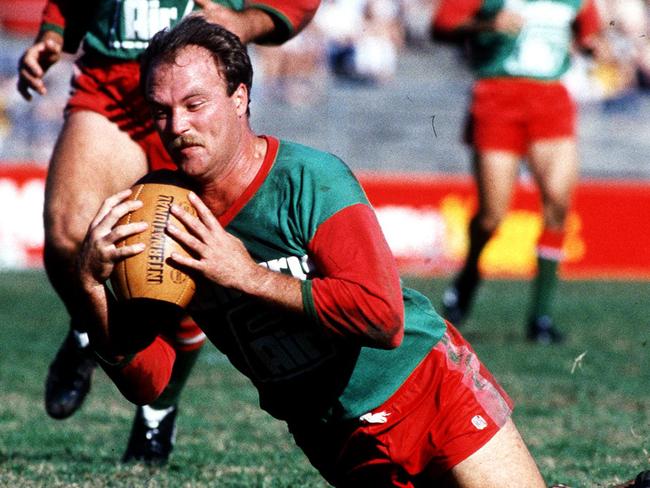

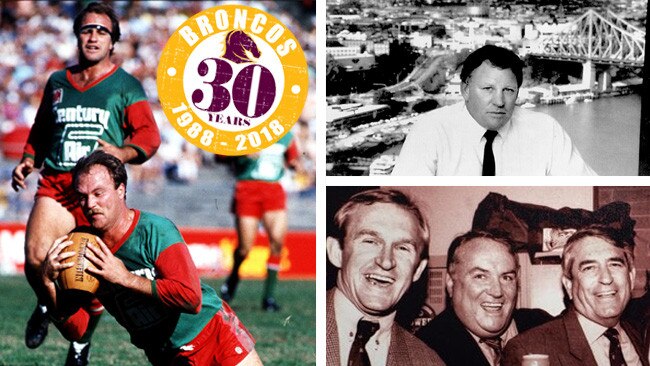
Add your comment to this story
To join the conversation, please log in. Don't have an account? Register
Join the conversation, you are commenting as Logout
NRL legend charged with drink driving
One of rugby league’s most celebrated players has been charged with high-range drink driving after allegedly blowing nearly four times the legal limit.
Broncos quartet fighting for Red Hill futures amid $4m cap crunch
Brisbane’s $4 million salary-cap crunch is biting hard with four leading Broncos players left with just nine regular-season games to save their careers at Red Hill. See who’s on the chopping block.